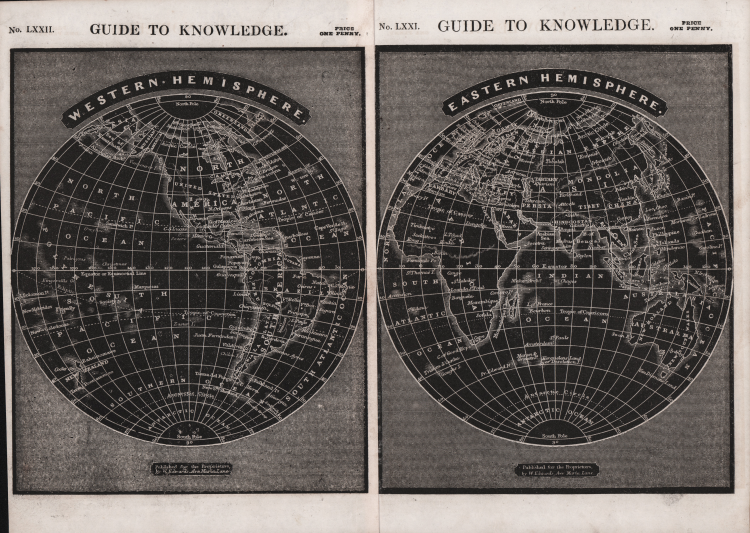



| Reference: | S46069 |
| Author | William Pinnock |
| Year: | 1833 |
| Zone: | The World |
| Printed: | London |
| Measures: | 355 x 258 mm |


| Reference: | S46069 |
| Author | William Pinnock |
| Year: | 1833 |
| Zone: | The World |
| Printed: | London |
| Measures: | 355 x 258 mm |
Map of the world in two hemispheres from The Guide to Knowledge by William Pinnock, published in London from 1833.
William Pinnock (3 February 1782 in Alton, Hampshire – 21 October 1843 in London) was a British publisher and educational writer. Orginally trading in hometown Alton, Hampshire; moved business to Newbury, Berkshire 1811 and to London in 1817 when bought premises of the Literary Gazette at 267 Strand in partnership with Samuel Maunder.
Lithograph, very good condition. Rare.
|
William Pinnock (3 February 1782 in Alton, Hampshire – 21 October 1843 in London) was a British publisher and educational writer. He was at first a schoolmaster, then a bookseller. In 1817 he went to London and, in partnership with Samuel Maunder, began to publish cheap educational works. The firm's first productions were a series of Catechisms, planned by Pinnock, consisting of short popular manuals, arranged in the form of question and answer, of the different departments of knowledge. This style was later copied by Fanny Umphelby. The dialogues were followed by abridged editions of Goldsmith's histories of England, Greece and Rome, and a series of county histories which were no less profitable. Pinnock lost nearly all his money in outside speculation. Pinnock's son, William Henry Pinnock (1813–1885), a clergyman, was the editor and author of several elementary textbooks and scriptural manuals, and of various works on ecclesiastical law and usage.
|
|
William Pinnock (3 February 1782 in Alton, Hampshire – 21 October 1843 in London) was a British publisher and educational writer. He was at first a schoolmaster, then a bookseller. In 1817 he went to London and, in partnership with Samuel Maunder, began to publish cheap educational works. The firm's first productions were a series of Catechisms, planned by Pinnock, consisting of short popular manuals, arranged in the form of question and answer, of the different departments of knowledge. This style was later copied by Fanny Umphelby. The dialogues were followed by abridged editions of Goldsmith's histories of England, Greece and Rome, and a series of county histories which were no less profitable. Pinnock lost nearly all his money in outside speculation. Pinnock's son, William Henry Pinnock (1813–1885), a clergyman, was the editor and author of several elementary textbooks and scriptural manuals, and of various works on ecclesiastical law and usage.
|